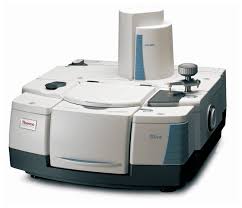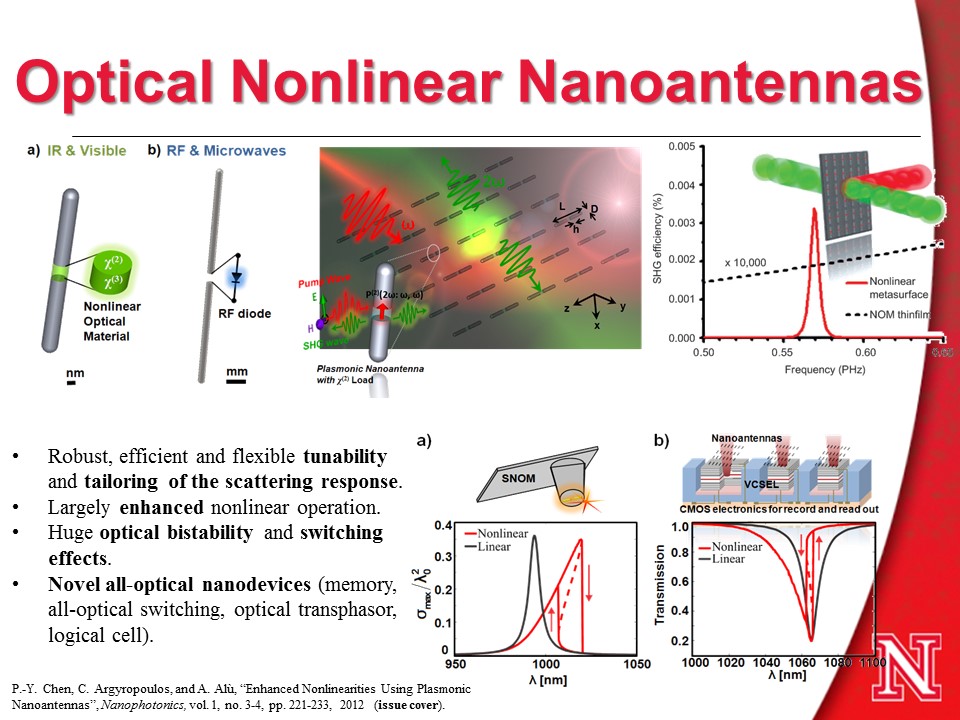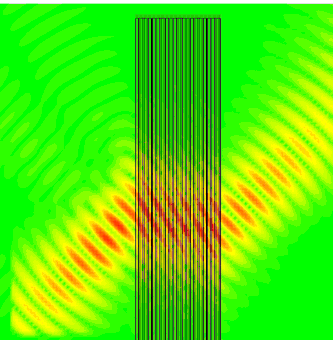Reconfigurable and Tunable Optical Nanocircuits, Nanostructures and Nanoantennas
Our lab is equipped with a Nicolet iS50 FTIR spectrometer for transmission and reflection measurements of samples in the broad wavelength range of 800 nm to 28,600 nm spanning visible and IR frequencies.



The recently proposed concept of metactronics, where plasmonic and non-plasmonic collections of particles act, respectively, as lumped nanoinductors and nanocapacitors, extends the well-established microwave engineering ideas to optical frequencies. In these high frequencies, the conduction current is replaced by the displacement current and the role of conductivity is taken by the local permittivity, which has a relatively wide variation in optical materials. I am trying to extend these interesting concepts to active, nonlinear and multilayer devices, in order to achieve novel functionalities, such as all-optical switches/nanomemories, efficient sensors, enhanced bandwidth performance, optical tagging, frequency comb generation, tunable negative refraction and gain compensation of losses. To this end, the flexibility in the electrical response of optical materials and metamaterials proves to be of fundamental importance. Moreover, the fundamental concepts of RF antennas may be scaled in frequency to optimize the design of nanoantennas and plasmonic nanostructures at frequencies for which bandwidths and speed-rates may be increased of orders of magnitude. Optical nonlinear materials are loaded in these nanoantennas and exotic responses are achieved, which may benefit the future wireless optical communication systems, optical computers and energy harvesting devices.